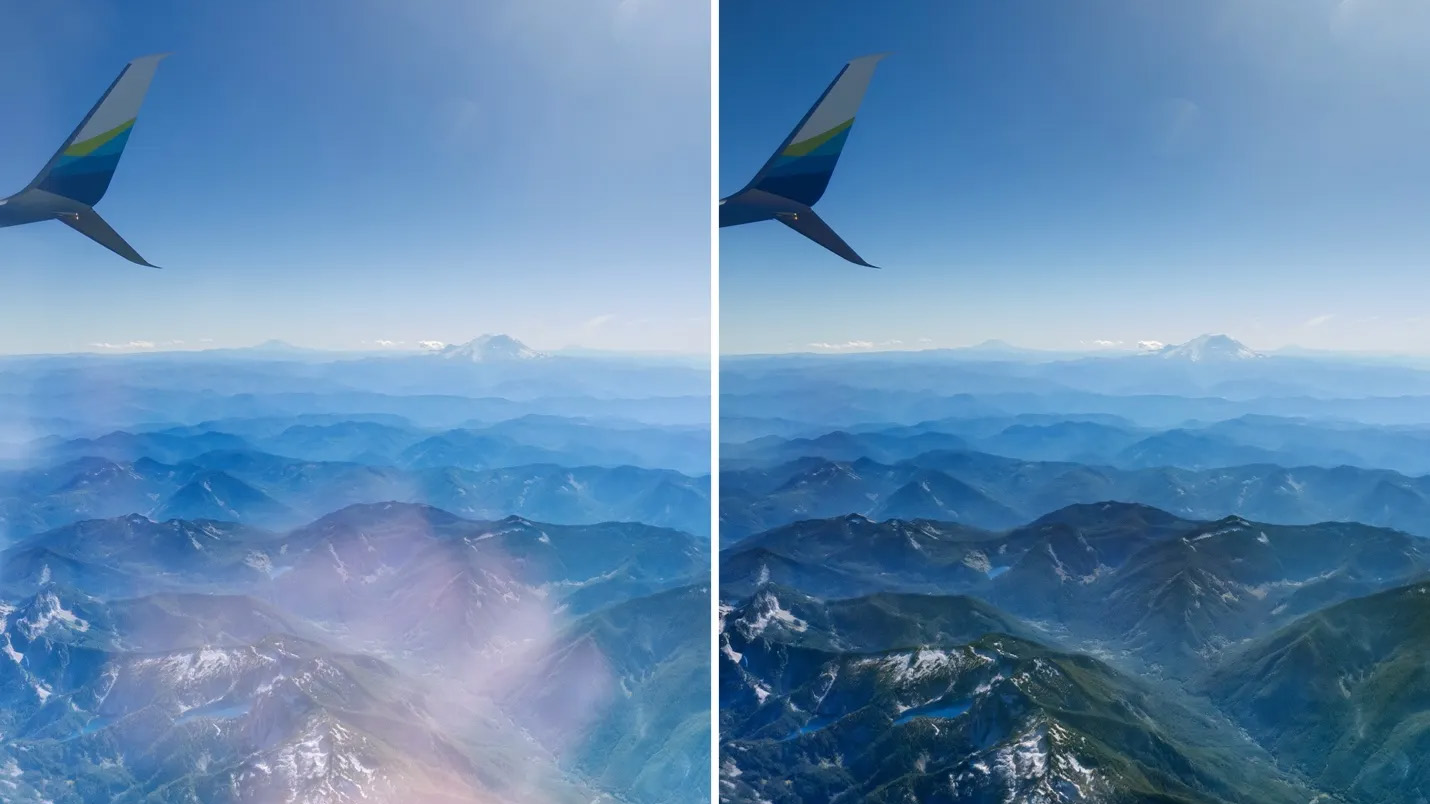- Adobe has launched an experimental new ‘Reflections Removal’ tool
- It’s available in beta for raw files in Photoshop and Adobe Bridge
- The impressive tool is also “coming soon” to Lightroom
The next big AI photography trick is removing pesky window reflections from our photos – and Adobe has seemingly cracked it with a new feature that’s available in beta now for Adobe Bridge, Photoshop and soon Lightroom.
The sensibly-named ‘Reflection Removal’ tool can instantly remove reflections from photos you’ve shot through the windows of homes, vehicles, shops or airplanes. And best of all, it doesn’t do it in an overly artificial way using generative AI.
Instead, Adobe says the ‘Reflection Removal’ model has been trained using millions of simulated photographs that task it with separating an underlying photo from a reflection. By rewarding the correct answers, the tool learns how to separate the ‘real’ photo from the reflection and allow you to fix it accordingly.
Right now, the tool only works on raw photos – so that’s the uncompressed files taken on your camera (like DNGs or CR2s) or the likes of ProRaw from iPhones. And it’s currently only a “technology preview” for Adobe Bridge and Photoshop, with Lightroom support “coming soon”.
But it’s clearly something that could ultimately become a built-in feature on the best camera phones. And it’s the latest AI tool that automates something that professionals have long battled with, in this case either by using pricey polarizing filters or advanced editing techniques.
How to try it

To take ‘Reflection Removal’ for a spin, open Photoshop’s Camera Raw plug-in (which pops up when you open a raw file in the app), then go to the Settings cog > Technology Previews, and check the ‘New AI Settings and Features’ box.
Once you restart Photoshop or Adobe Bridge, head to the Remove panel (which is the eraser symbol on the right) and in the Distraction Removal section check the ‘Reflections’ box.
After a few seconds, you’ll see an estimation of what the final image will look like with the reflections removed, but you can also tweak the strength of the effect.
By default, the slider will be set to 100, but like most Adobe sliders, you’ll likely be best going for something more subtle by moving the slider to the left.
Analysis: Not perfect yet, but it’s an impressive start


Adobe admits that the best fix for this photography problem is to avoid reflections in the first place, rather than using its experimental tool. For example, when taking photos through a window, you want to press the lens as close to the glass as possible (photographers also use a ‘lens skirt’ to help with this).
The ‘Reflection Removal’ tool does also have a few weaknesses. It doesn’t currently work very well with cityscapes at night, and it might end up removing some reflections that you actually want in the photo. That’s why Adobe’s included the slider to adjust the strength of the effect.
But considering how complex removing reflections from photos is, the tool is a solid first step and something I’d consider using in the editing process. Some aspects of the photo may end looking artificial, but Adobe isn’t relying on generative AI to ‘guess’ at what should be in the photo – and it could ultimately rescue shots that would otherwise head straight to the trash can.
The technique will also clearly become much more user-friendly and approachable. Adobe says it’s “planning to support JPEGs, HEICs, and other non-raw files” and I can see the tool, albeit in less powerful form, arriving natively on Pixel phones, Android and iOS, with Google and Apple presumably looking on with interest.
Interestingly, Adobe also says it wants to “extend our tool to the removal of dust, scratches, rain, snow, or other things that land on windows”, like bugs on windshields. It isn’t clear how that differs from existing object removal tools, but the problem may ultimately become – how sanitized and perfect do we want our photos to become? For those who have long struggled with photo-ruining reflections, that’ll be a nice dilemma to have.
You might also like
This articles is written by : Fady Askharoun Samy Askharoun
All Rights Reserved to Amznusa www.amznusa.com
Why Amznusa?
AMZNUSA is a dynamic website that focuses on three primary categories: Technology, e-commerce and cryptocurrency news. It provides users with the latest updates and insights into online retail trends and the rapidly evolving world of digital currencies, helping visitors stay informed about both markets.
